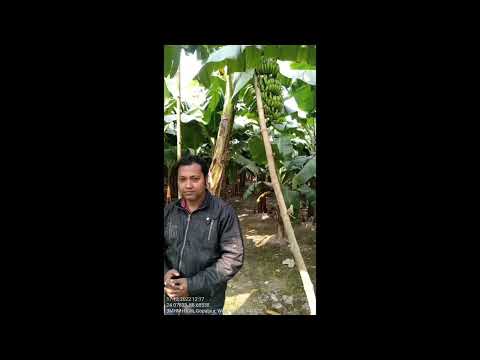Marion’s Airport Runway Sale: City Shifts Focus to Aquatic Center and Urban Development

“Marion’s airport runway sale has a minimum price tag of $857,500, reflecting shifting municipal priorities.”
In the realm of urban planning and development, we are witnessing a significant shift in priorities for the City of Marion. The city’s decision to sell its airport runway and redirect focus towards community amenities like an aquatic center has sparked considerable interest in municipal circles. This move represents a broader trend in how local governments are reassessing their infrastructure investments and adapting to changing community needs.
As we delve into this topic, it’s crucial to understand the multifaceted nature of urban development decisions. While some cities might be expanding their aviation infrastructure, Marion is charting a different course. This decision reflects a careful balancing act between maintaining essential services and investing in new projects that directly benefit residents.
The Airport Runway Sale: A Bold Move
The City of Marion has taken a decisive step by putting its portion of the Marion Airport up for sale. This includes the airport’s runway and a fixed-base operations building. The minimum purchase price has been set at $857,500, a figure that has caught the attention of potential buyers and industry observers alike.
What makes this sale particularly interesting is the stipulation that the runway must continue to operate as such. This requirement ensures that while the city is divesting itself of the property, it’s also safeguarding the airport’s functionality for the community.
- Minimum sale price: $857,500
- Assets for sale: Airport runway and fixed-base operations building
- Key requirement: Continued operation as a runway
City Manager Ryan Waller presented this plan to the City Council, setting in motion a process that could significantly alter Marion’s municipal landscape. The council is scheduled to review proposals on March 3, followed by a public hearing on March 6, where further action may be taken.
Historical Context and Recent Investments
To fully appreciate the significance of this decision, we need to look at the airport’s history and recent investments:
- The Marion Airport has been operational since the 1950s
- In 2015, Marion purchased the runway for $1.67 million
- A $1.8 million runway extension project was completed in 2020
- The 2017 Airport Layout Plan proposed a $30 million investment for various projects
These facts demonstrate that the city has made substantial investments in the airport over the years. The decision to sell now represents a significant pivot in municipal strategy.
LuxAir Aviation: A Key Player
LuxAir Aviation, which owns the majority of the airport operations, is expected to be a significant player in this process. While co-owner Sarah Witter has not disclosed specific plans, ongoing discussions between City Manager Waller and co-owner Jeff Witter suggest that LuxAir is closely involved in shaping the airport’s future.
This situation highlights the complex interplay between public and private interests in municipal aviation infrastructure projects. The outcome of these negotiations could set a precedent for similar situations across the country.
Shifting Priorities: The Aquatic Center and Urban Development
The city’s decision to exit the runway business is not made in isolation. It’s part of a broader strategy to reallocate resources towards projects that officials believe will have a more direct impact on the community’s quality of life. Chief among these is the proposed new aquatic center.
- The city has agreed to purchase a 24-acre site for $1 million for the aquatic center
- This purchase is contingent on voter approval of a bond referendum in November
- The bond would also fund renovations to Willowood Park, including upgrades to the existing swimming pool
These plans reflect a growing trend in urban planning where cities are prioritizing community amenities and green spaces. The proposed aquatic center, in particular, represents a significant investment in recreational infrastructure that could serve as a community focal point for years to come.
The Role of Public Opinion and Voter Approval
A critical aspect of this entire process is the role of public opinion and voter approval. The bond referendum scheduled for November will be a crucial test of public support for the city’s new direction. This democratic process ensures that major decisions about public resources and infrastructure are subject to community input.
As urban planners and city officials, we must always be mindful of the need to balance various community interests. The upcoming referendum will provide valuable insights into the priorities of Marion’s residents and their vision for the city’s future.

“The city plans to exit the runway business by June, impacting local aviation infrastructure and urban development.”
Implications for Local Aviation and Business
While the city’s focus is shifting, it’s important to consider the implications for local aviation and businesses that rely on the airport. The Marion Airport currently serves various functions, including:
- Air ambulance flights
- Flight training
- Charter services
- Private business travel
- Aerial photography
- Agricultural spraying
The continuity of these services will largely depend on how the new owner manages the runway and associated facilities. This transition period will be crucial for maintaining the airport’s role in supporting local businesses and emergency services.
Economic Considerations and Budget Priorities
At the heart of this decision lies a complex set of economic considerations. The city has determined that it cannot afford to maintain the runway while also pursuing other future projects. This reflects the challenging budgetary decisions that many municipalities face, especially in the wake of economic uncertainties.
By selling the runway, the city aims to:
- Reduce ongoing maintenance costs
- Generate immediate revenue from the sale
- Free up resources for other priority projects
This strategy aligns with broader trends in local government budget priorities, where officials are increasingly looking to optimize asset utilization and focus on core services.
The Request for Proposals (RFP) Process
The city’s approach to selling the runway through a Request for Proposals (RFP) process is worth examining. This method allows the city to:
- Set specific requirements for potential buyers
- Evaluate proposals based on multiple criteria, not just price
- Ensure transparency in the sale process
Proposals must be submitted to the Marion City Clerk’s Office by 10:00 am on March 3. This deadline creates a sense of urgency and allows the city to move forward with its plans in a timely manner.
Comparative Analysis: Airport Sale vs. New Projects
| Project | Estimated Cost | Expected Benefits |
|---|---|---|
| Airport Runway Sale | $857,500 (minimum) |
– Privatization of municipal airport – Reduced city maintenance costs – Immediate revenue generation |
| New Aquatic Center | $1 million (land purchase only) |
– Enhanced recreational facilities – Potential boost to local economy – Improved quality of life for residents |
| Park Renovations | To be determined |
– Upgraded swimming pool – Modernized park amenities – Increased community engagement |
This comparison clearly illustrates the city’s shift in priorities, moving from aviation infrastructure to community-focused amenities.
The Role of Technology in Urban Planning
As we discuss these developments, it’s worth noting the increasing role of technology in urban planning and development. While not directly related to Marion’s airport sale, innovative solutions are transforming how cities manage their resources and plan for the future.
For instance, companies like Farmonaut are revolutionizing land use in agriculture through satellite technology. While Farmonaut’s focus is primarily on agricultural applications, the principles of using advanced technology for resource management and planning are equally applicable to urban development.
Farmonaut offers services such as:
- Satellite-based crop health monitoring
- AI-driven advisory systems for land management
- Blockchain-based traceability solutions
These technologies, while primarily used in agriculture, demonstrate the potential for data-driven decision-making in urban planning and land use. As cities like Marion navigate complex decisions about infrastructure and development, tools that provide accurate, real-time data could prove invaluable.
To learn more about how satellite technology is changing land management practices, you can explore Farmonaut’s offerings:
Public Engagement and Transparency
As Marion moves forward with its plans, public engagement and transparency will be crucial. The city’s decision to hold a public hearing on March 6 is a positive step in this direction. It provides an opportunity for residents to voice their opinions and for officials to address any concerns.
Key aspects of ensuring public engagement include:
- Clear communication of plans and rationale
- Multiple channels for public feedback
- Regular updates on the progress of projects
- Transparency in the decision-making process
By prioritizing these elements, Marion can build trust with its residents and ensure that the city’s development aligns with community expectations.
The Future of Municipal Airports
Marion’s decision to sell its airport runway raises broader questions about the future of municipal airports across the country. As cities grapple with budget constraints and changing priorities, we may see similar decisions in other communities.
Factors influencing the future of municipal airports include:
- Changing patterns in air travel and general aviation
- Increasing maintenance costs for aging infrastructure
- Competition from larger, regional airports
- Shifting community priorities towards other forms of development
As urban planners and policymakers, we must carefully consider these factors when making long-term decisions about aviation infrastructure.
Environmental Considerations
While not explicitly mentioned in the context of Marion’s decision, environmental considerations often play a role in urban development choices. The shift from maintaining an airport to investing in recreational facilities like an aquatic center could have environmental implications.
Potential environmental aspects to consider include:
- Changes in local air and noise pollution levels
- Land use efficiency
- Water management for the new aquatic center
- Energy efficiency of new vs. old infrastructure
As cities increasingly focus on sustainability, these factors are likely to become more prominent in urban planning decisions.
Conclusion: A Pivotal Moment for Marion
The City of Marion stands at a crossroads, with its decision to sell the airport runway marking a significant shift in municipal priorities. This move reflects broader trends in urban planning and development, where cities are reevaluating their assets and investments to better serve changing community needs.
As we’ve explored throughout this discussion, the implications of this decision extend far beyond the immediate sale of the runway. It touches on issues of public finance, community development, aviation infrastructure, and the role of technology in urban planning.
The coming months will be crucial as the city navigates the sale process, bond referendum, and implementation of new projects. The outcomes of these efforts will likely shape Marion’s development trajectory for years to come.
For urban planners, policymakers, and engaged citizens, Marion’s experience offers valuable insights into the complex decision-making processes that shape our cities. It underscores the importance of balancing various community needs, engaging with the public, and leveraging technology to make informed decisions.
As we continue to monitor these developments, it’s clear that Marion’s story is part of a larger narrative of cities adapting to new realities and reimagining their futures. The lessons learned here will undoubtedly inform similar decisions in communities across the country.
FAQ Section
Q: Why is the City of Marion selling its airport runway?
A: The city has decided to sell the runway to reduce maintenance costs and redirect resources towards other priority projects, such as a new aquatic center and park renovations.
Q: What is the minimum price for the airport runway sale?
A: The minimum purchase price has been set at $857,500.
Q: Will the airport continue to operate after the sale?
A: Yes, one of the key requirements for potential buyers is that the runway must continue to operate as such.
Q: What is LuxAir Aviation’s role in this process?
A: LuxAir Aviation, which owns the majority of the airport operations, is expected to submit a proposal for the runway. They are likely to play a significant role in the airport’s future operations.
Q: How does this sale relate to the proposed aquatic center?
A: The sale is part of a broader strategy to reallocate resources. The city plans to use funds from a bond referendum to purchase land for a new aquatic center and renovate existing park facilities.
Q: When will decisions be made about the runway sale?
A: The City Council is scheduled to review proposals on March 3, followed by a public hearing on March 6, where further action may be taken.
Q: How can residents voice their opinions on these plans?
A: Residents can attend the public hearing on March 6 and participate in the bond referendum scheduled for November.
Q: What services does the Marion Airport currently provide?
A: The airport currently serves various functions including air ambulance flights, flight training, charter services, private business travel, aerial photography, and agricultural spraying.
Q: How might this decision impact local businesses?
A: The impact on local businesses will largely depend on how the new owner manages the runway and associated facilities. The city’s requirement for continued runway operation aims to minimize disruption to current services.
Q: Are other cities making similar decisions about their municipal airports?
A: While each city’s situation is unique, many municipalities are reevaluating their infrastructure investments in light of changing priorities and budget constraints. Marion’s decision could set a precedent for other cities facing similar choices.
Earn With Farmonaut: Affiliate Program
Earn 20% recurring commission with Farmonaut’s affiliate program by sharing your promo code and helping farmers save 10%. Onboard 10 Elite farmers monthly to earn a minimum of $148,000 annually—start now and grow your income!







